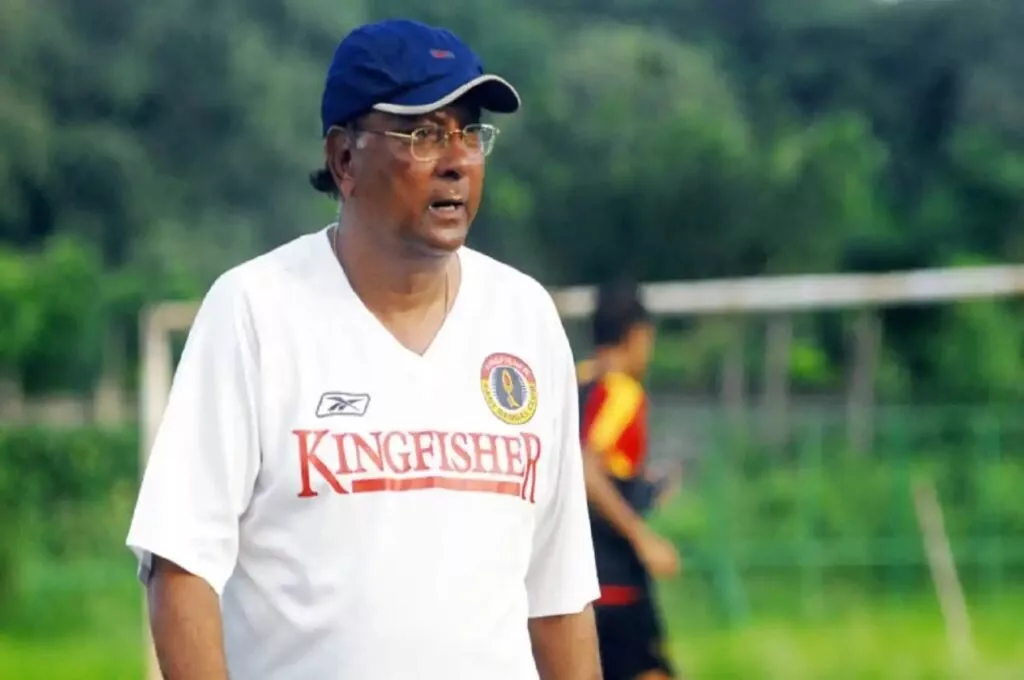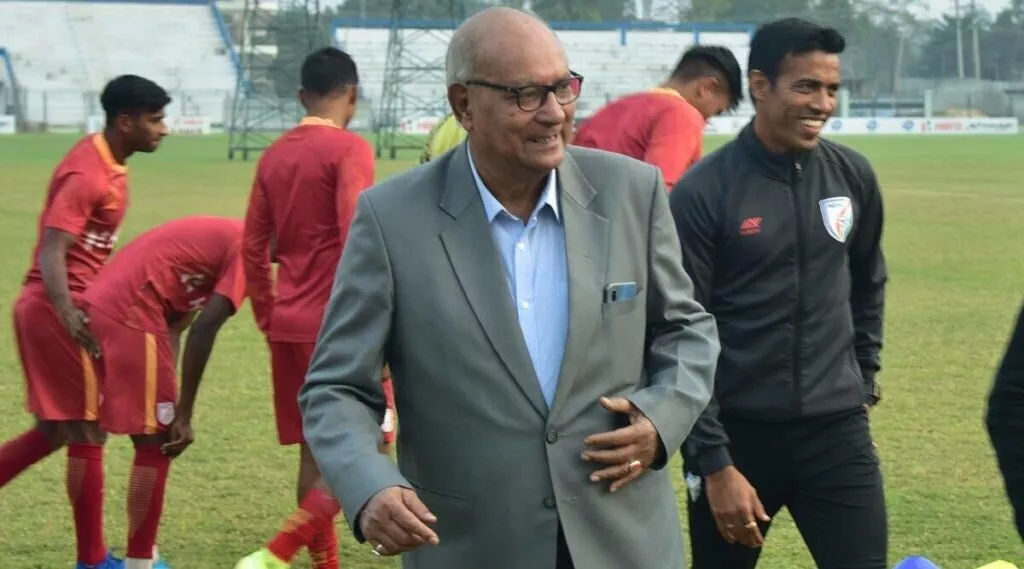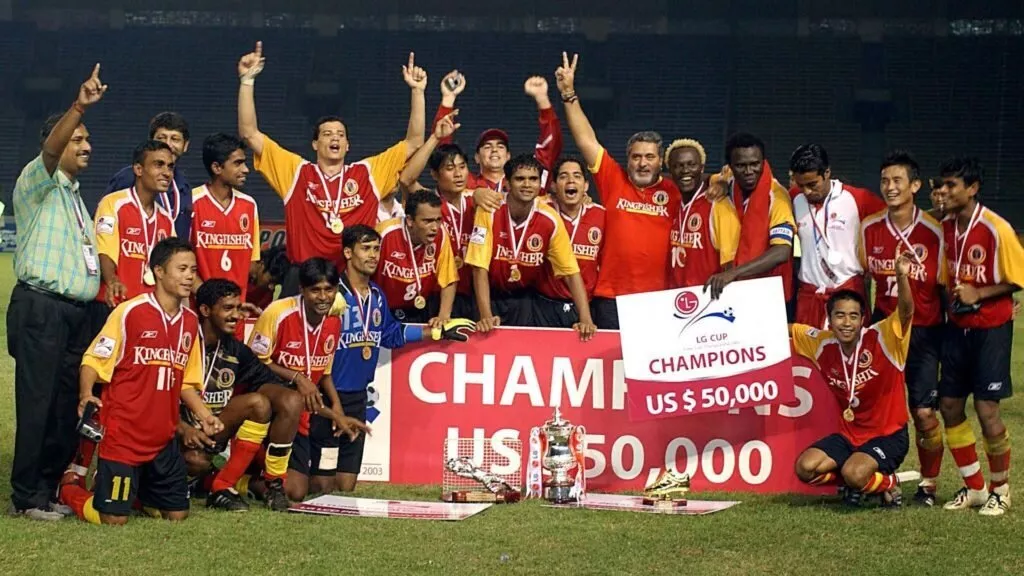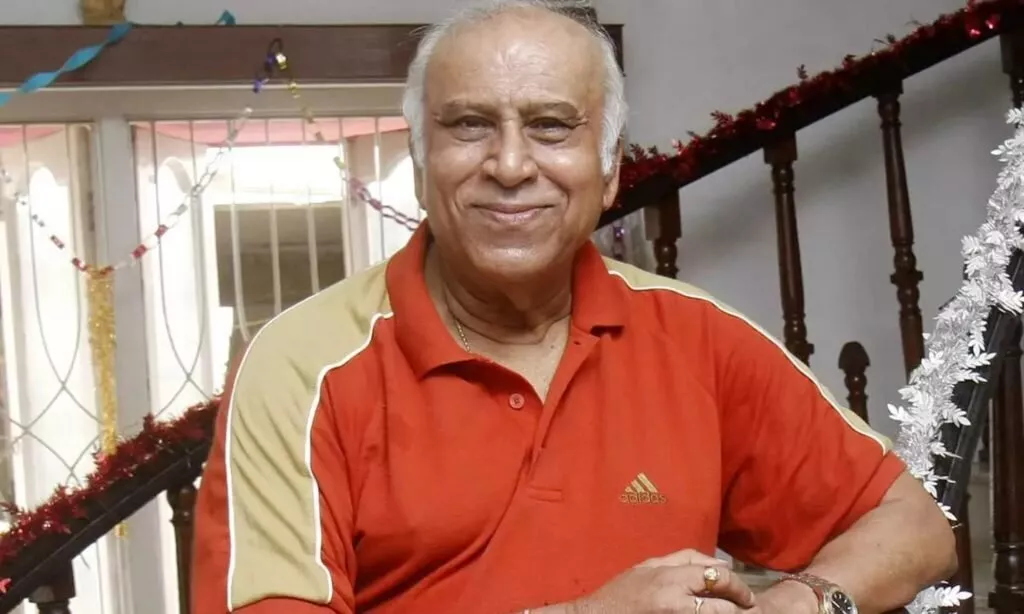Looking back at Subhash Bhowmick, Indian football's timeless phenomenon

(Courtesy : The Quint/Indian Express/TV9 Bangla)
He remains the only Indian coach to have won a continental club tournament.
It's 1973. A young footballer comes out of the gates of Mohun Bagan. Exhausted, he started to walk towards the Ganges. Suddenly a car arrives and someone comes out to start a conversation. Subhash Bhowmick is sought by Pradip Kumar Banerjee (PK Banerjee), the then coach of East Bengal. Kolkata maidan’s very own Pradip Da had a good eye for players. His scouting sense was brilliant. He knew the prowess of Bhowmick, who was then suffering a knee injury.
Back in those days, such an injury was problematic. The scientific ways weren’t as advanced as it is today. The player didn’t have to operate the knee. Rather he was advised various exercises by a famous orthopedic surgeon. Mocked by the supporters and thrown out of Mohun Bagan, Bhowmick was back soon after. This outspoken and shrewd man was full of comebacks, be it as a player or a coach.
[KH_ADWORDS type="4" align="center"][/KH_ADWORDS]
The Bulldozer
In 1969, Subhash Bhowmick stepped into East Bengal. His playing career was full of ups and downs. From winning bronze at the 1970 Asian Games to ending his career at a very young age. How many people in the Indian football community are aware that in 1976, Bhowmick was the highest-paid Indian footballer in the country? Does anyone know that he is perhaps the only footballer to score in four consecutive Kolkata derbies? Yes. That’s a feat that no other player has achieved. Not even Bhaichung Bhutia.

The first of the four derby goals for East Bengal came at the Calcutta Football League in 1973. East Bengal won the match 2-1 as Bhowmick and Md. Habib scored for the Red & Gold Brigade while Mohan Singh bagged one for the Mariners. His next goal in the Kolkata derby came in the Super League, held in the same year, where the match ended 1-0 to East Bengal.
The third came in the IFA Shield semi-final of 1973 when East Bengal defeated their arch-rivals by 3-0, courtesy a brace of Md. Habib and a solitary goal from Subhash Bhowmick. The last one came in the same competition, where the scoreline read 1-0.
In 1976, he went on the become the highest-paid footballer in the country. Sources claim it was Rs. 40,000 for the year.
Unfortunately, due to certain personal reasons, he left football in 1979. Pradip Kumar Banerjee, whom he considered to be his ‘Guru’ tried to convince him to not end his playing career and sign for East Bengal. But perhaps Bhowmick had done, achieved and seen it all, there wasn't anything new in it for him.
[KH_ADWORDS type="3" align="center"][/KH_ADWORDS]
The Tactician
“Tera daddy toh pagal ho gaya,” East Bengal supporters are familiar with this quote from Bhaichung Bhutia. Bhutia said this to Bijen Singh on the very first training session for the preparation of the ASEAN Cup. But we’ll keep that aside for now and dive deep into the past.
Subhash Bhowmick’s journey as a coach started in 1986 with Kolkata side George Telegraph. In 1989, he led the Indian football team to a tournament in Dhaka. This competition also marked the comeback of Manoranjan Bhattacharya to the national camp, who was suspended from the side since 1984. How did it happen? Requests from the coach to Priyaranjan Das Munshi. And here we go. The ‘check-post’ was back and that too as the captain.

1991 marked Bhowmick’s entry into the big clubs as coach. He won the Sikkim Governor’s Gold Cup with Mohun Bagan that year. But it wasn’t a successful stint. After undergoing a bypass surgery, he returned to the dugout, at East Bengal, in 1999. Though he showed promise, but couldn’t capitalize much except the Calcutta Football League.
As mentioned earlier, he was a man full of comebacks. During the 2001/02 season, the East Bengal officials brought Bhowmick back on board. From this point till 2005, he remained the head coach for the Kolkata giants and won a number of trophies. In 2002/03, the club won all the five competitions they participated in.
East Bengal participated in the famous ASEAN Cup in 2003. Now let’s go back to that quote mentioned earlier. Why did a player of the stature of Bhutia make such a comment? Bhowmick stated in the team meeting that East Bengal were capable of lifting the ASEAN Cup. Well, Bhutia can’t be blamed, right? It was something unthinkable back in those days. Even now, we hardly see Indian clubs featuring regularly in continental tournaments. But was it just an arrow thrown in darkness? Or did Bhowmick have a plan?
[KH_ADWORDS type="2" align="center"][/KH_ADWORDS]
Contribution to Indian football
A man who had immense knowledge of the sport, Bhowmick knew in order to fight against teams abroad, the players needed excellent physical fitness. He brought in a physical trainer from abroad. Initially, he spoke to Andrew Leipus, the then physiotherapist of the Indian cricket team. Leipus was impressed with the plans Bhowmick had. But due to certain reasons, he wasn’t able to associate with the club.
Bhowmick clearly understood the need for these off-the-pitch inputs. He even introduced the Jacuzzi in Indian football (on the recommendation of Leipus) and the need for it for the betterment of the muscles. In his place, Leipus sent Kevin Jackson, who joined as a physical trainer at East Bengal. The season saw East Bengal winning the ASEAN Cup and the National Football League. Subhash Bhowmick remains the only Indian coach to date to have won a club continental tournament. In 2004/05, he brought in Peter Mcknight as the physical trainer of the club.

Speaking of the ASEAN Cup, Bhowmick introduced the concept of a proper pre-season camp, where the team will be staying together in a hotel and go through with their training. Getting the Hyatt Regency was a tough task for the man, but somehow he managed. The team stayed at the hotel and trained before leaving for the ASEAN Cup. He did not want the team to suffer from inferiority complex.
In the ASEAN Cup, East Bengal played in a 3-5-2 formation. A three-man backline wasn’t something new in Indian football. Amal Dutta’s famous ‘Diamond formation’ also consisted of a back three. But Bhowmick successfully implemented it. As a coach in the big clubs, his team often scored three goals or won by that margin in the derby.
[KH_RELATED_NEWS title="Related News |ARTICLE CONTINUES BELOW"][/KH_RELATED_NEWS]
Apart from the tactical prowess, his man-management was extraordinary. During the ASEAN campaign, his treatment of Douglas Silva and Sasthi Duley explained his brilliance in the area.
Apart from winning several accolades at East Bengal, he also won trophies at Mohun Bagan and Churchill Brothers (I-League). He was in charge at other clubs like Mohammedan SC, Salgaocar FC and Tollygunge Agragami. The only competition he never won as a coach was the Federation Cup.
Influences

Bhowmick always stated Lt. Pradip Kumar Banerjee as his Guru. Other than him, he was also highly inspired by the likes of Johan Cruyff, Sir Alex Ferguson and Pep Guardiola.
His passing away is considered to be a huge loss to the sport in our country.
For more football updates, follow Khel Now on Twitter, Instagram and join our community on Telegram.
Where passion meets insight — blending breaking news, in-depth strategic analysis, viral moments, and jaw-dropping plays into powerful sports content designed to entertain, inform, and keep you connected to your favorite teams and athletes. Expect daily updates, expert commentary and coverage that never leaves a fan behind.
- FC Goa vs FC Istiklol Player Ratings: Drazic and Nemil shine, while Harsh and Prachit disappoint
- Cameroon vs Gabon: Live streaming, TV channel, kick-off time & where to watch AFCON 2025
- FC Goa players stage on-pitch protest following AFC Champions League Two game kickoff
- Ivory Coast vs Mozambique: Live streaming, TV channel, kick-off time & where to watch AFCON 2025
- Palmer, Estevao & more - Chelsea injury update ahead of Aston Villa Premier League clash
- Top six quickest players to reach 100 Bundesliga goal contributions; Kane, Aubameyang & more
- Top three highest goalscorers in French football history; Kylian Mbappe & more
- With ₹19.89 crore bank balance; AIFF & Indian football standing on edge of financial collapse?
- AFCON 2025: All nations' squad list for Morocco
- Zlatan Ibrahimović names one of Lionel Messi’s sons as his “heir”